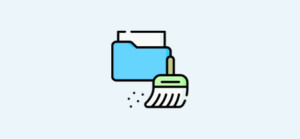The return on investment from email is huge. But for that, you need the data around the best time to send the email, benchmark yourself against others in your industry and give you the five-step guide to planning your own email frequency so you don’t end up spending hours or months building your email list.
Scheduling wrong emails at the wring times lead to higher unsubscribe rates and greater expenses for your business. It also leads you to the no man’s land a.k.a. The Promotions Tab.
What is The Best Time to Send an Email?
Well, simply look at the data. It’s not as straightforward as you’d hope. The best email frequency is the one that works for YOU. How to know that? We first look into the data.
According to Hubspot:
Tuesday seemed to be the best day to send an email, followed by Monday and Wednesday.
In a study by GetResponse:
They also found Tuesdays to be the best day to send emails.
Mailchimp conducted similar research and found:
Thursdays to be the optimum day to send emails based on open rates and the percentage of unsubscribes.
Email Frequency
When determining email frequency, we must also consider how many emails to send. Many businesses send bulk emails too often and to the wrong people. This results in high unsubscribe rates. BlueHonet found the top reason why people unsubscribe from your list is because of frequency. Sending emails too frequently and to the wrong audience can significantly increase unsubscribe rates, as BlueHonet's research unveiled that the primary reason people opt out of email lists is due to excessive frequency. To maintain a healthy subscriber base, it is crucial for businesses to strike the right balance in email frequency and ensure they are targeting the appropriate recipients.
How Often to Send Emails?
In a study by MarketingSherpa, consumers were asked how often they would like to receive emails? Over 80% said they’d be happy to receive an email from companies at least once a month. 60% said they’d be happy to receive an email at least once a week.
So what does this data tell us? You should never do what everyone else is doing. Every business is different. What works for someone might not work for you.
Use Data as Benchmarks
There is no one size fits all when it comes to email. But if you are totally in the dark use data as a guideline to craft your own strategy.
Segment your Email List
Everyone in your email list is different. They have different wants and needs. The only point of commonality is that they signed up to you at some point. Don’t send the same emails to everyone even when it is very convenient. Send emails based on interests and demographics. There you have a much higher chance of converting your subscribers into lifelong customers.
Be Consistent
If you promise to send your email subscribers an email every Thursday, Send them an email every Thursday. Letting your subscribers know when you plan to email them is a really good idea. Do this in your welcome email so people know what to expect.
Always Test
Every email list is different, and the best time or frequency for you to send an email might not be the same as another email marketer. Some people like to check their emails just when they return from lunch or on the couch at the evening. We are all very different in that matter. There is no time or day that works for all. Try scheduling your next 7 emails to go out on different days of the week. Split test by sending an email at different timings to see when you get the highest open rate and clickthrough rate.
Depending on the size of your email list you might have to perform this task more than once to get statistically significant results. You will soon start to see a pattern. Most email services will let you split test based on frequency, timing, content, subject line, and so on.
Ask Your Subscribers
When in doubt, we typically ask people. Why not ask people who are receiving your email? Ask them when or how often would they like to receive your emails. They are the ones who can give you the most precise and real answer. This will create a stronger relationship with your customers.
Emailing Too Little?
Is there any danger involved in emailing your subscribers too little? There sure is. Firstly, not sending them enough emails means you are missing out on revenue opportunities. Your email list is a vast pool of potential customers. Limiting the numbers of emails means limiting your chance of your buyers buying from you. You won’t have a strong presence in the inbox. They might even forget you. On average office workers get 122 emails per day. No one wants a stranger in their inbox so before they unsubscribe you. Send them an email.
Email marketing is about building long term relationships with your customers. Using data as a benchmark and testing things out will ensure you provide the best value to your customers. It will increase your email marketing return on investment.


![Email Accessibility Guide [2025]](https://ik.imagekit.io/debounce/wp-content/uploads/2022/07/email-accessibility-guide-2-300x139.png)


